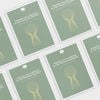
Product-as-a-Service business model development
Product-as-a-Service (PaaS) is one approach to shift from simply selling products to charging for utility and creating stronger alignment with circular economy practices. The approach ensures that the company captures value each time the product is used and puts it at the core of its business strategy.
By aligning incentives between businesses and customers, PaaS encourages manufacturers to design products for durability, repairability, and recyclability, while empowering consumers to access goods on a pay-per-use basis. Moreover, PaaS enables businesses to forge deeper relationships with customers, offering personalized solutions, continuous product improvements, and enhanced value-added services.
We work with multiple brands on developing a Product-as-a-Service business model and value proposition. By exploring what PaaS can do, companies can unlock new revenue streams, drive innovation, and contribute to a more sustainable and resilient future.


